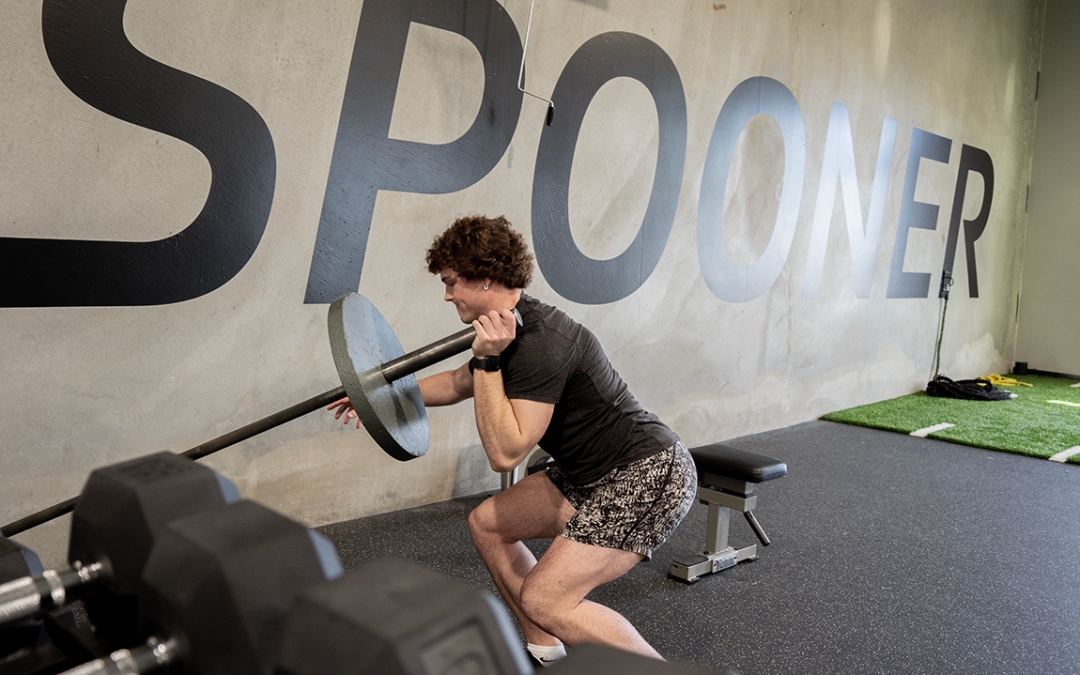By: Pete Gorman, PT, DPT, CSCS
When you think about pitching, throwing, and hitting baseballs, you may think about the power coming from the upper body- which is a completely natural thought! It is where we see the action take place. However, a throw or a hit is the output of a lot of different actions within the body. The lower extremity and core are just as- if not more- important than the upper extremity in your ability to throw a baseball or swing a baseball bat from a performance and a health side.
Performance and Control
Generating throwing and/or pitching velocity and bat speed are vital aspects of performance in baseball. The power needed for both starts in the lower extremity and then translates up the body in to the upper extremity. The more power you are able to produce translates up your kinetic chain (link) and comes through your arms. The higher velocity you can achieve in a pitch or the faster you can swing can result in huge performance metrics.
The power that translates up the kinetic chain in throwing and swinging has to be controlled. If your body has the ability to generate a great deal of force but then cannot slow it down in the end ranges of the motion, there is a higher risk of shoulder and elbow injuries. The highest frequency of shoulder and elbow injuries occur specifically in pitchers. It is recommended that youth pitchers, depending on age, should throw no more than 2,000-3,000 pitches in a year—which is still a lot of the same repetitive high velocity movement!! It is important to create healthy habits to be successful in the field and to reduce the risk of injury.
When you throw or swing on one side, you are going to be performing those motions over and over again throughout the baseball season. If you are not efficiently creating enough force with your lower extremity or your lower body positioning is incorrect, there will be compensations in your shoulder and elbow to either generate the power itself or control the motion. This will increase your risk of injury. Since your lower extremity is a power house of muscle, utilize it! The large muscle groups- your glutes, hamstrings, and quads- are major stabilizers that, if used correctly, can take the stress of the smaller muscle groups in the upper body.
Power and Control in the Lower Extremity
To best maximize power and control in the lower extremity, focus on three things:
Hip Mobility
If you don’t have the ability to load into your glutes while transferring your weight during a pitch, throw, or a swing because you lack hip mobility, you won’t be able to fully utilize the power your glutes can give you. On the front side, if you don’t have the internal rotation of the hip, you will have issues finishing the throwing or hitting motion, thus causing your body to place more stress in other areas which can eventually lead to injury.
Glute Strength
Glute strength on the back leg creates the rotational power needed for throwing and swinging. While the lead leg glutes and hamstrings bring the ability to decelerate that motion. It is important that we train these muscles specifically to mimic the way they will be utilized when playing to elicit the best performance and maintain a healthy body.
Balance
Pitchers generally wind up with the most shoulder and/or elbow injuries, so balance is extra important for pitchers but also useful in maintaining body control for position players and hitters, allowing them to better utilize their strength and power.
While pitching, only one foot is in contact with the ground at the time. During the wind up, you kick your leg up really high, so your standing leg has to be balanced, so you can transfer and throw effectively.
Physical Therapy for Baseball Athletes
In any sport, there is a team of people working to maximize the health and performance of the athlete- physical therapists, strength coach, athletic trainers, and coaches. Physical therapists are part of this team and can help identify any weaknesses or movement deficits the athlete may have and work together with the rest of the health and performance team to help them move, feel, and perform their best.
Physical therapy can help baseball players unlock their full range of motion while efficiently controlling their body, so we can then send them to a strength coach for baseball specific movements, or to a pitching coach to work on specific cuing. We can identify movement deficits and correct them so strength coaches and baseball coaches can focus on the skills, mechanics, and power necessary to play the game at a high level with a decreased risk for injury. We work as a team so the athlete can effectively use their body and create the power and control needed while playing alongside staying as strong and healthy as possible.
Schedule an appointment with a Spooner therapist today!

